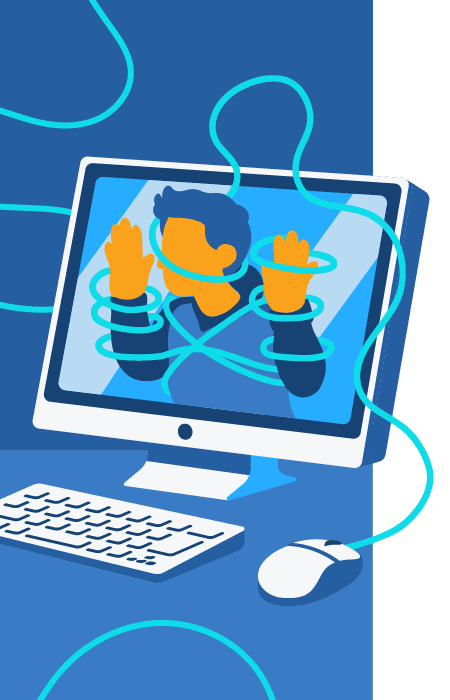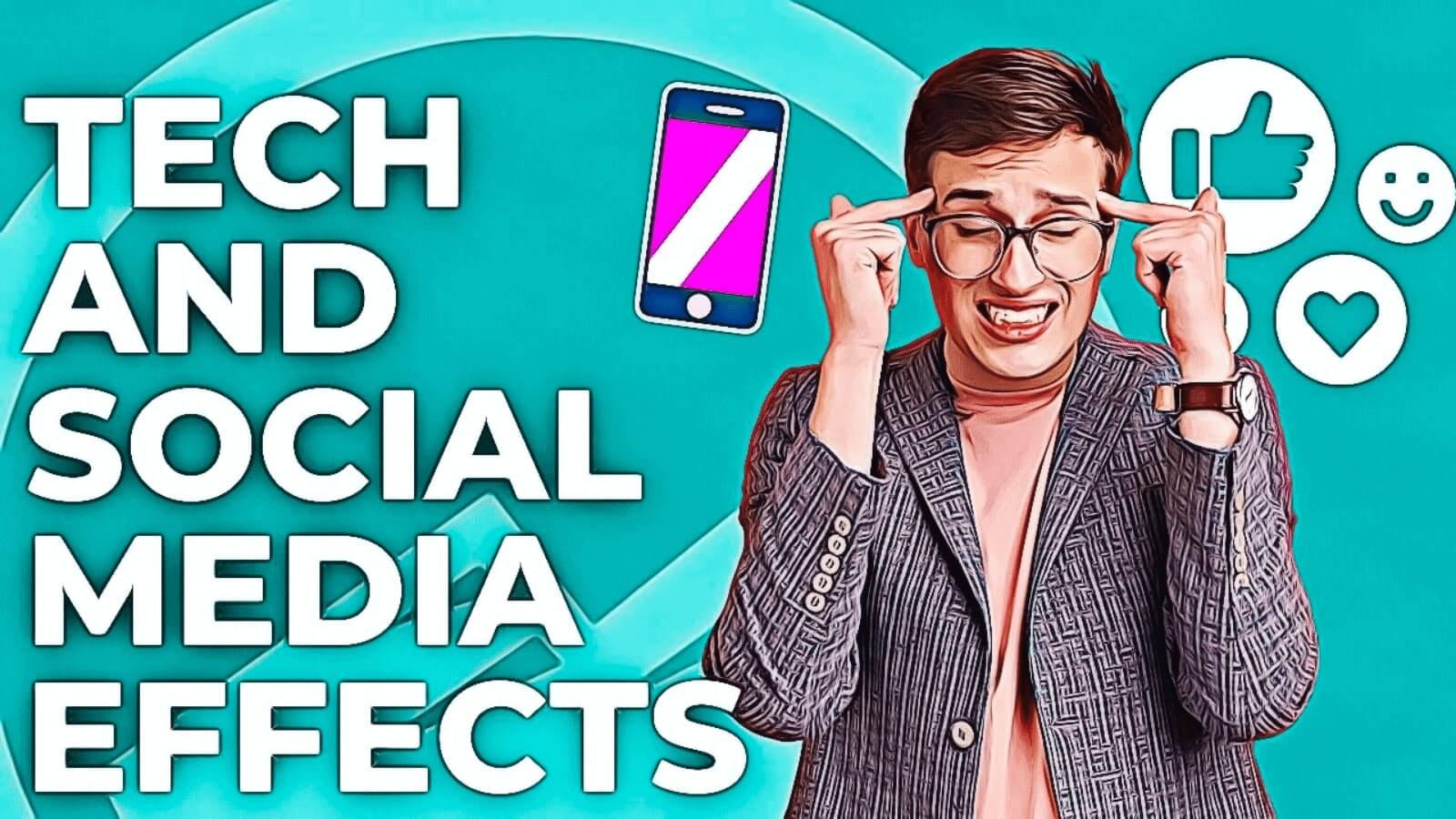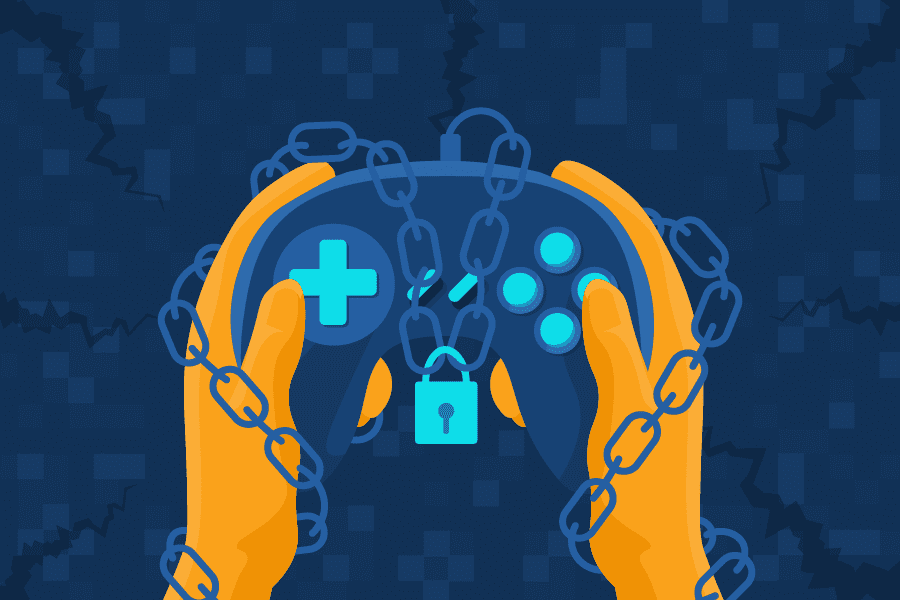What is Technology Addiction?
Since the emergence of the internet and smartphones, research is showing an increase in the number of people struggling with an addiction to technology.
It’s not uncommon for both youth and adults to feel a need to constantly be “plugged in” to social media and the internet, but this often leads to a fear of missing out, and fear of being left out in young people.
Coupled with the neurological changes that take place in the brain while being online, technology addiction can be added to the list of behavioral addictions.
Sandstone Care assesses and treats technology addiction in both its teen and young adult treatment centers.
Technology addiction falls into a category of addiction termed behavioral addictions. Behavioral addictions are widely recognized by mental health and addiction professionals and include other behaviors such as gambling and sex.
A behavioral addiction is characterized by a progressive inability to control, regulate, or limit the behavior. Technology addiction also shares similarities with obsessive-compulsive disorders.
Our modern world is characterized by increasing connectivity and technology use.
However, some teens and young adults cross from normal use into a realm in which their technology use is having a negative impact on school, work, family, and social life.
Technology addiction includes an addiction to video games, social networking, and surfing the web, among other things.

What Is Technology Addiction Called?
Technology addiction is also called digital addiction, internet addiction, or internet use disorder.
Technology addiction is a term used to refer to obsessive behavior related to technology, whether gaming, pornography addiction, social media, online shopping, video watching, or anything involving technology.
Screens and technology are all around us in our daily lives. For young people especially, the rise of technology has changed the way we live our lives.
While technology reaps many benefits, it is difficult to ignore the negative impact it can have on one’s physical and mental health.
Can Technology Become An Addiction?
Yes, technology use can become an addiction.
While technology has provided society with many benefits and advancements, it also has negative consequences.
Technology use, especially the increasing use of social media, has become a concern among teens and young adults.
Technology addiction can be characterized by compulsive behavior that is difficult or impossible to quit, despite the adverse effects it has on their individual and their well-being.
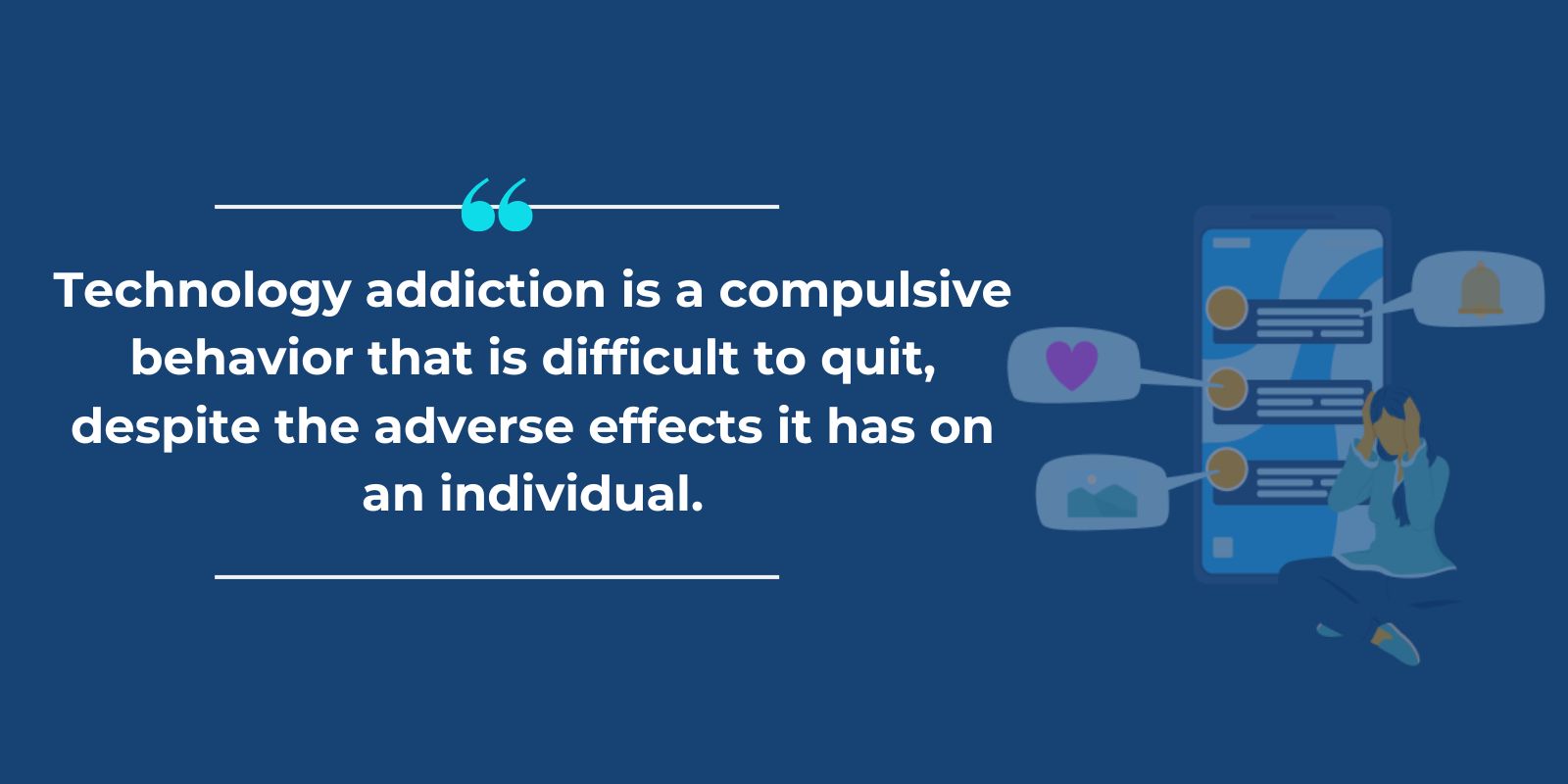
How Is Technology An Addiction?
Technology can be seen as an addiction because it can involve certain factors that include:
- Inability to control the amount of time spent on technology
- Need for more time or new technology-related things to achieve desired effects
- Experience withdrawal symptoms when not engaged
- Continuing obsessive behavior despite the negative consequences, it has on one’s life and health
- Impact on social life, work, or school
What Are Some Technology Addictions?
Some of the most common types of technology addictions include:
- Gaming addiction
- Online gambling addiction
- Social media addiction
- Online shopping addiction

Signs & Symptoms of Technology Addiction
Here are Craig Knippenberg’s nine signs a a teen or young adult might be addicted:
- It is hard for my child to stop using screen media
- The amount of time my child wants to use screen media keep increasing
- My child sneaks using screen media
- My child needs more intense and novel games and apps to reach the same level of satisfaction
- When my child has had a bad day, screen media seems to be the only thing that helps him [or] her feel better
- My child thinks obsessively about their game or phone when not using it
- My child’s screen media use causes problems for the family
- My child’s academics, activities or health are suffering because of electronics
- My child is becoming more and more isolated
If you believe you or a loved one may be struggling with a technology addiction, it is important to seek professional advice from a healthcare provider or mental health professional.

Is this blog hitting close to home?
We’re here to help.
What Does Internet Addiction Look Like?
A person struggling with internet addiction spends an excessive and increasing amount of time online.
The significant amount of time a person with internet addiction spends on technology commonly causes them to isolate themselves and spend a lot of time alone or in their room.
They often have little interest in things that don’t involve the internet or technology. When they are not engaged in internet use, it may be all they think about.
They may also compulsively check their phone, mobile device, or notifications.
Someone with internet addiction may also face negative effects on their mental health and physical health because of their internet use.
They may experience physical symptoms that can include:
- Headaches
- Neck pain
- Poor hygiene
- Sleep problems
- Weight gain
- Eye problems
Although there are common symptoms of internet addiction, it can look very different from person to person.

What Are The Warning Signs Of Excessive Time Spent Online?
Warning signs a person may be spending too much time online can include:
- Losing track of time when online
- Becoming irritable or angry when not online
- Spending time online in place of responsibilities like work and school
- Feeling a sense of “euphoria” when online
- Checking devices compulsively throughout the day
- Preferring to be online than with loved ones
- Avoiding things that need to be done in favor of technology use
- Using the internet as an “escape”
- Lying or being secretive about time online
- Losing interest in things you once loved before excessive internet use
- Spends significant amounts of money on online things
- Is unable to control online use and has tried to quit or decrease time online but failed
Effects of Addiction to Technology
How Does Technology Affect Our Life?
Technology has allowed for a lot of improvements and advancements in our lives.
It has helped make jobs easier, resources more accessible, and communication easier, among many other things.
Technology has also led to important advancements in the safety and healthcare industry. Without technology, many of the things we do today wouldn’t be possible.
While the many benefits of technology should not be ignored, it is important to acknowledge the negative effects technology has had.
Technology can negatively affect our sleeping habits, communication and relationships, mental health, and physical health. It often distracts us from important things and tasks and decreases the time we spend with face-to-face interaction.
In our daily life, technology use can take up valuable hours. Many people’s work and school require them to be on a screen, and then outside of those things, we still have television, smartphones, and online shopping.
Many can say that the rise of technology has also made people more dependent. While technology has made a lot of things more easy and simple, people may find it hard to go without it from time to time.
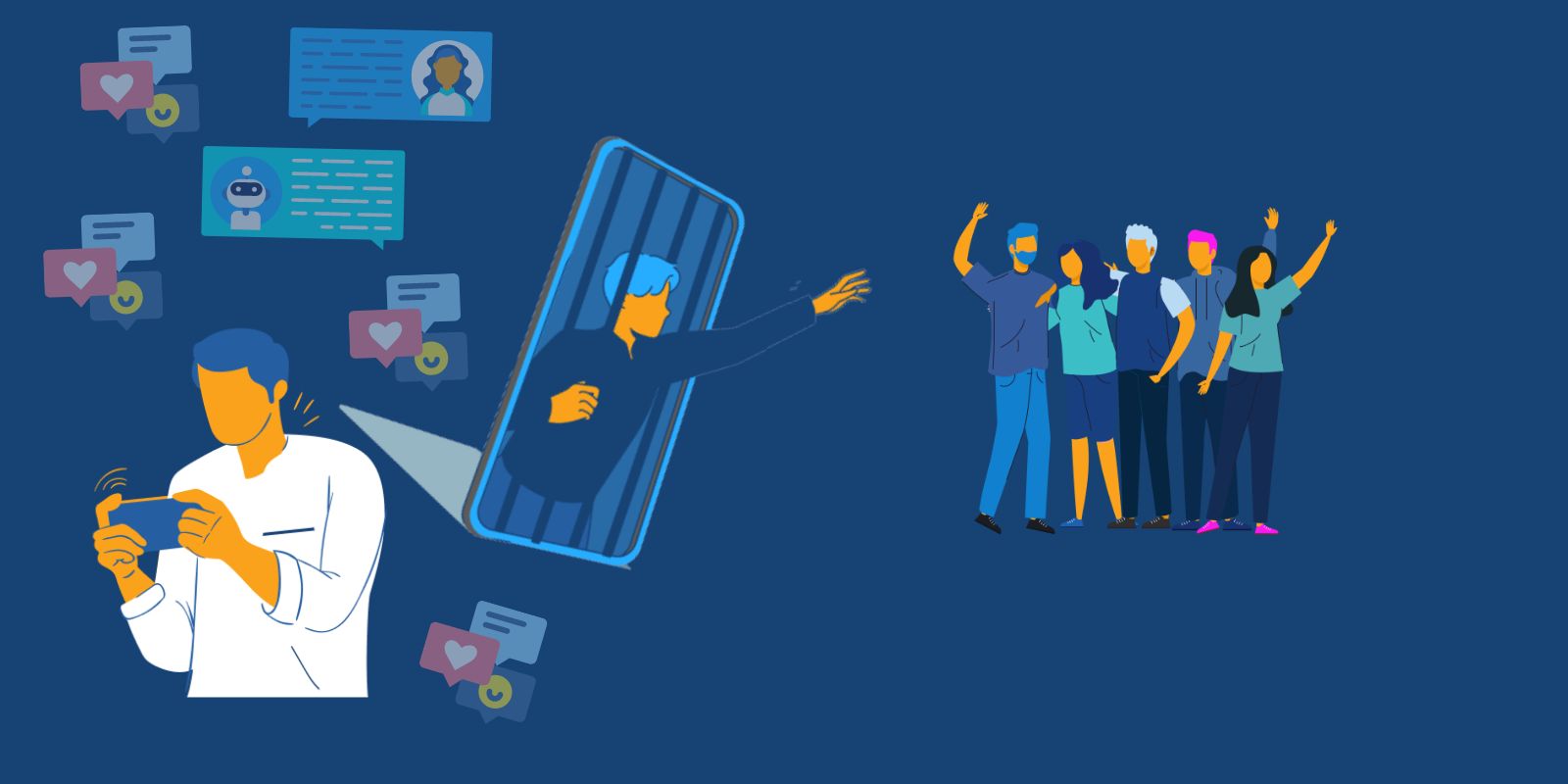
What Are The Problems Caused By Technology Addiction?
Some of the problems caused by technology addiction can include:
- Mood changes
- Poor mental health
- Poor physical health
- Problems processing information and problem-solving
- Sleep problems
- Lack of social interaction and social skills
- Problems at work, school, or in relationships
What Does Too Much Screen Time Do To Your Brain?
On a neurological level, technology addiction operates similarly to chemical addictions, in that expectation followed by reward leads the brain to release dopamine and other feel-good chemicals.
This reward might be winning a level of a video game, or getting “likes” on a picture.
Over time, a person begins to crave this dopamine release and often requires increasing stimulus to get the same effect.
While chemical addictions often have a magnified effect by blocking the re-uptake of these feel-good chemicals so that they stay in the brain longer and more powerfully, researchers are finding that the inconsistent rewards often associated with behavioral addictions like gambling and video games also increase the flood of dopamine.
(i.e., taking a hit of marijuana will consistently yield a “reward” in the brain, while a person doesn’t know when they will beat a video game level or get a “like.” This not-knowing increases the intensity of the physiological response to reward.)
According to the National Institute on Drug Abuse, too much screen time can cause changes to the brain and affect brain development.
The cortex, specifically, is an area of the brain that processes information. The ABCD study revealed that kids who used screens for more than 7 hours a day had a thinner cortex than those who used screens less.
Too much screen time has also been associated with a higher risk of developing mental health disorders, such as depression or anxiety.
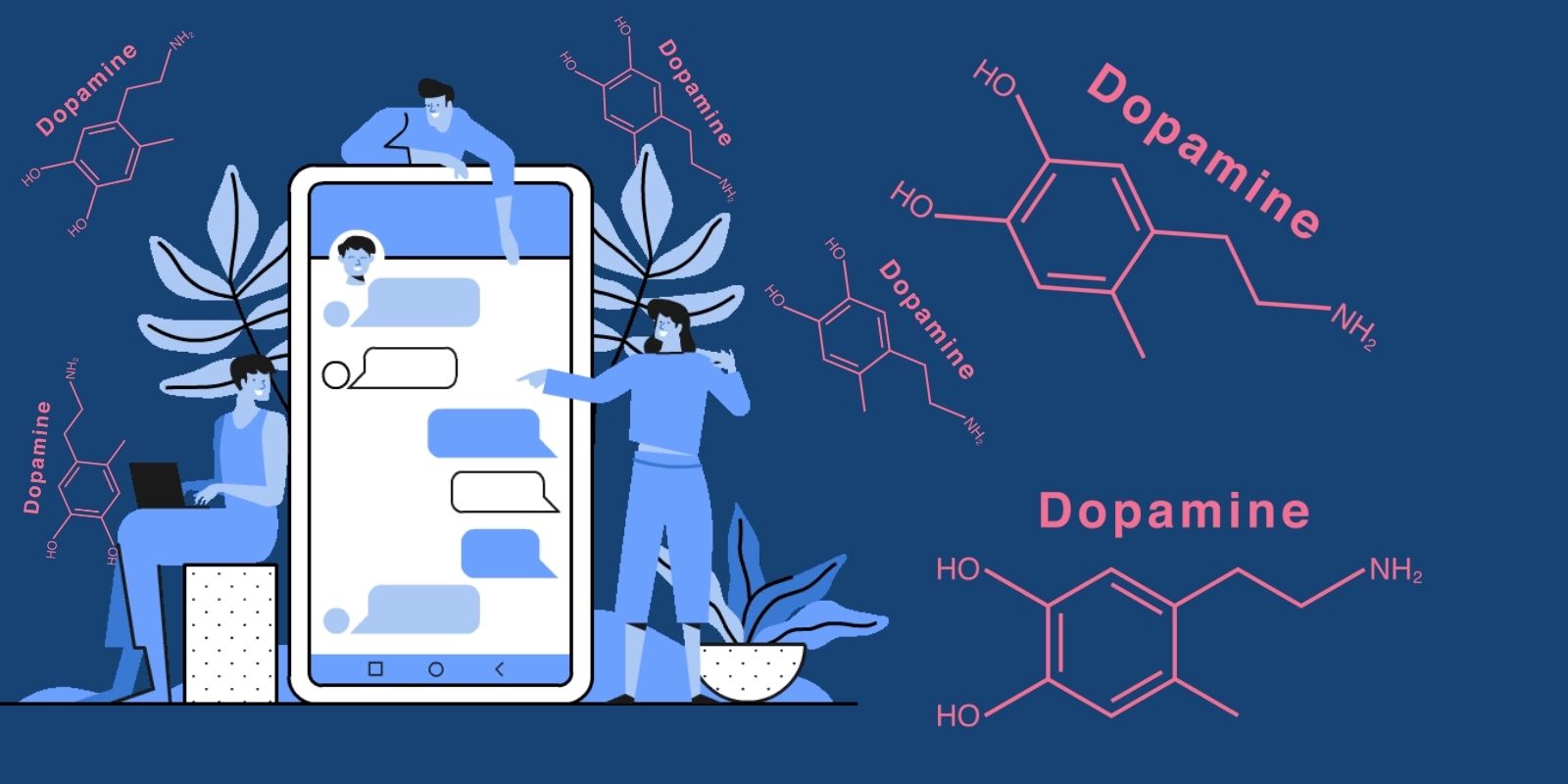
What Is The Cause And Effect Of Technology Addiction?
A variety of factors may contribute to the development of technology addiction.
These may include:
- Environmental factors
- Underlying mental health disorders such as anxiety or depression
- Genetics
Often those who receive treatment for technology addiction will often be treated for underlying mental health conditions that may contribute to obsessive technology use.
How Does Internet Addiction Affect Mental Health?
Technology use, specifically social media use and screen time among children and teens, can lead to mental health problems and worsen already present mental health disorders.
Studies suggest that social media use can be associated with problems such as depression, anxiety, low self-esteem, and affected concentration.
Technology use among young children and teens can also impact their future relationships and their emotional development.
Excess amounts of screen time use among young people also usually mean less time for human interaction. A person with internet addiction often isolates themselves and spends a lot of time alone or in their room.
Some people may turn to electronics as a way to cope with mental health conditions. They may use it as an “escape” or as a way to feel better. However, doing so in excessive ways can quickly become unhealthy and make matters worse for a person’s physical and mental health.
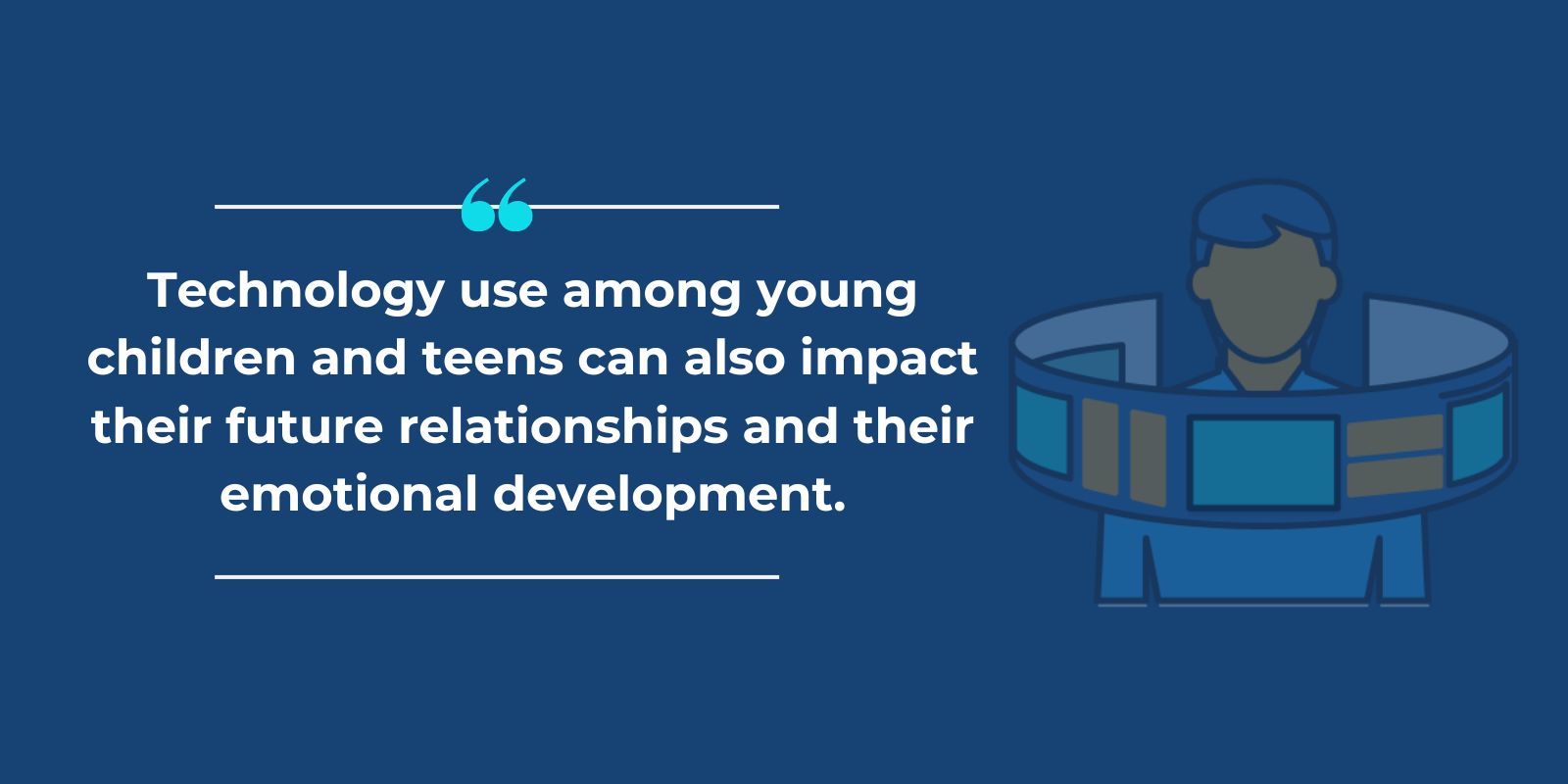
What Negative Effects Has Technology Had On Education?
While technology has advanced many aspects of education, many acknowledge that there are negative effects technology has had on education.
Some of these negative effects can include:
- Increased distractions and decreased attention span
- Decreased social skills and interaction
- Higher costs
- Made it easier to cheat
Technology can also create a learning curve, making it harder for some students and teachers to learn and navigate as opposed to more traditional ways of educating.
As technology use becomes more common in schools, it is important to consider to pros and cons of it and make sure to monitor screen time among students.
Prevalence of Technology Addiction
It is difficult to determine how many teens and young adults suffer from technology addiction, but a 2012 study found that 4.4% of European adolescents had what researchers termed “pathological internet use” and approximately 14% displayed what they called “maladaptive internet use.”
Other studies have found that approximately 10% of people’s internet use interferes with their work, family or social life.
To complicate things further, the developers of technology like video games and social media are actively trying to create products that tap into our addictive tendencies, talking openly about creating a “compulsion loop.”
Teens & Technology Addiction
More research needs to be done on the long-term effects of technology addiction on adolescents’ development.
However, we do know that adolescents’ brains are developing into their mid-20s, pruning away “pathways” in the brain that are unused, and strengthening the “pathways” that are used frequently. This means that our habits in adolescence actually change our brains.
Based on what we know about other addictions, wiring the brain strongly for the expectation and reward of technology likely sets teens up to be more susceptible to these compulsive loops later in life.
Additionally, adolescence is an important time to build social skills and form identity. Substituting online for real-life interaction, complete with body language and subtle cues, may impact teens’ social and emotional development.
9 Tips To Managing Gaming For Teens
Here are nine practical strategies you can use with your child reduce gaming addiction:
- If you enjoy playing video games and want to share this with your child, play only a couple of games with your kids at a time, and then turn the game off. There are many ways to bond with your children, and with healthy limits, gaming can become one of them.
- Limit the amount of time your child/teen can play to 30-45 minutes per day (if you allow electronics during the week) and perhaps two separate 45-minute sessions on weekends. Recent research has shown that a daily one-hour limit helps increase children’s sociability. That time limit includes gaming in your own home as well as at a friend’s house.
- Instead of implementing a time limit with Fortnite, consider having a two or three game limit. (This takes into account the fact that any child/teen would be horribly embarrassed to leave their friends in the middle of the game.) For other games, have a set time limit.
- Implement rules for when the game can be played. Gaming time should only take place after homework is complete and should end at least 45 minutes to an hour before bedtime. Research has shown active screens stimulate the brain and can inhibit the release of Melatonin—which is necessary for sleep.
- Consider taking a total break from the game if your son or daughter is caught sneaking it, continually fights about turning it off, or is becoming overly frustrated or emotional while playing or is irritable afterwards.
- Have a limit on how much money can be spent on Battle Passes. After all, what child/teen doesn’t want to be part of the latest fashion trend?
- Create a gaming area in a family area.
- Be very strict with your time limits for first person shooter games.
- For on-line gaming, talk to your child about only playing with friends they know in real life.
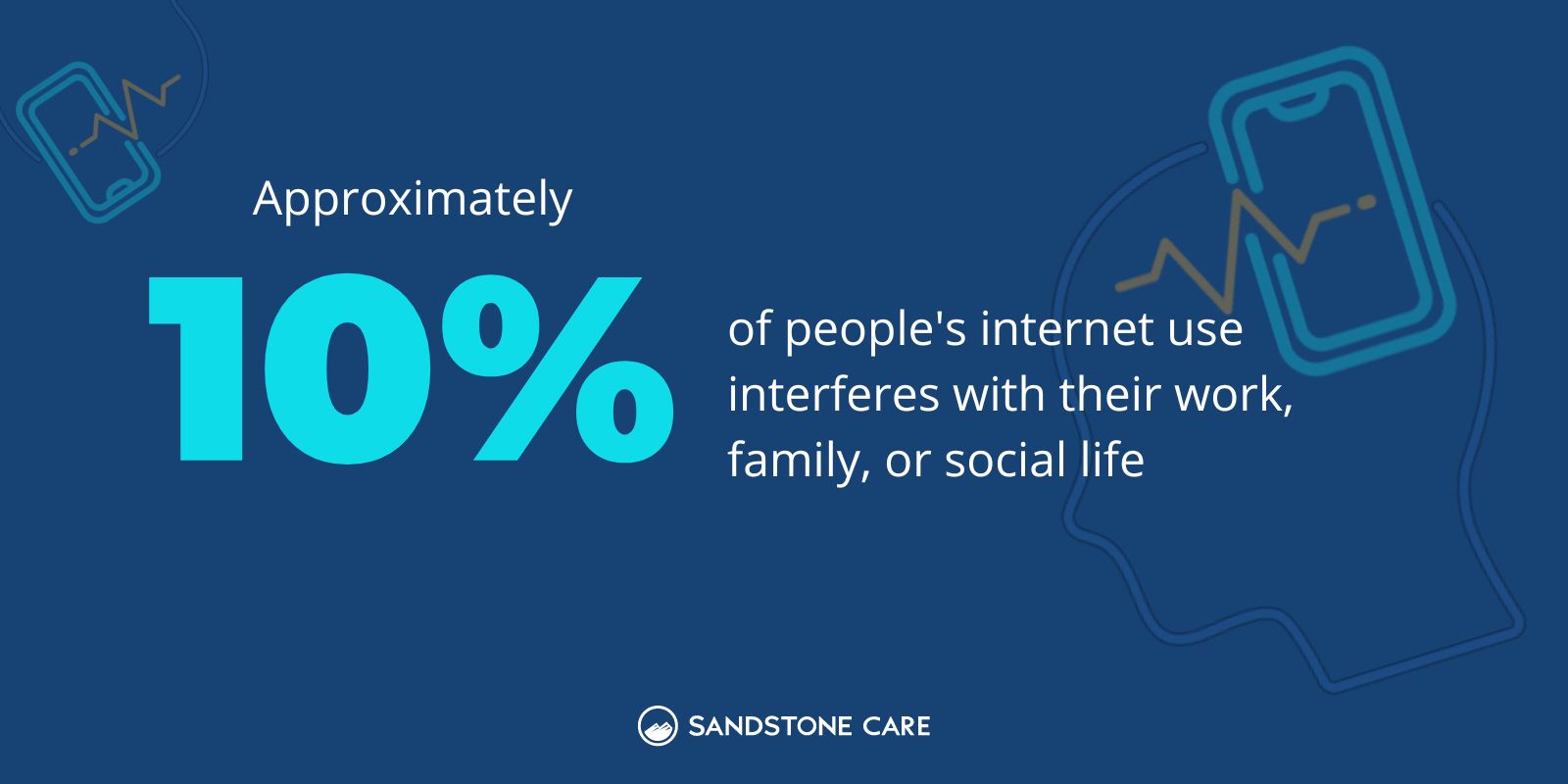
12 Tips for Managing Smart Phones
Simple ways to help your teen look up from their phone:
- Wait until 8th! This organization encourages parents to pledge to wait till 8th grade to give their child a smart phone.
- Be good role models with your smart phone usage.
- Start with a flip phone and have a “no-delete” rule for texting. Only parents should delete.
- Phones must be turned over when requested by parents.
- Create smart phone “free zones” and times in the house. No phones at the dinner table.
- Keep school free of mobile devices. The temptation to hide a phone under a table in order to sneak a game in can be overwhelming for the developing brain
- Talk to and do research with your kids about various apps. Help them be aware of various dangers (i.e.: bullying, predators, challenge games, pornography) and the potential social drama’s inherent in social media usage. Discuss how others might perceive messaging.
- Talk to you child about use of privacy settings (vs. public) when utilizing apps.
- For older teens, teach and role model turning the apps to “no notifications” during family time and during homework.
- Block specific times of twenty minutes to check social media.
- Don’t save, send or forward pornographic material.
- Discuss consequences ahead of time for misuse and how responsible usage equals increased freedoms
Our Accreditations
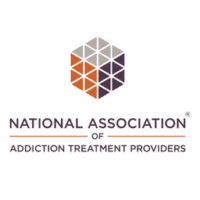
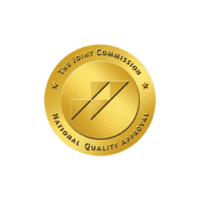


6 Tips To Manage Technology At Night
Sleep is vital for teens and young adults. Sometimes, technology can impact their sleep cycles and increase technology addiction. Use the 6 ways to help your child get a good night’s rest.
- Start with daily limits on electronic usage outside of required homework.
- Follow the advice of no screen time 30 – 45 minutes prior to bedtime.
- Utilize nighttime settings on devices (f.lux).
- No electronics in your child’s bedroom after “lights out”.
- Use an alarm clock to wake up in the morning instead of a smart phone as devices should already be checked in to the charging station.
- Most importantly, have a consistent bedtime and practice pre-bedtime rituals, which help soothe your child/teen emotionally and promote a good night’s sleep for their overworked frontal cortex.
Technology Addiction Treatment
Technology addiction falls into the category of compulsive behavior that it is difficult or impossible to simply abstain from, like food or sex addictions.
Thus, treatment for technology addiction involves educating teens and young adults about what is happening in their brains and bodies, recognizing the consequences of their compulsion, helping them to set limits and interrupt the compulsive cycle, and find alternatives.
Sandstone Care integrates treatment of technology addiction into its programs by treating is as a cooccurring mental health disorder. As referenced, technology addiction is often present with other disorders including anxiety, depression, trauma, or substance use.
So taking a holistic and comprehensive treatment approach is important in order to help achieve sustainable recovery.
Some of the treatment modalities that Sandstone Care uses include:
How Can We Stop Technology Addiction?
Aside from treatment, some ways to break a technology addiction can include:
- Stop using technology at night time
- Start with small things, such as shutting off your phone during dinner
- Turning off notifications
- Setting time limits for technology use
Parents with worries about their kids and technology addiction may wonder if there are ways to prevent it.
Some ways to prevent technology addiction can include:
- Limiting technology use and screen time
- Schedule times to use technology and other times to engage in other activities
- Have conversations with your children early on about technology and how to use it in moderation
- Dedicate times that are “tech-free” throughout the day, such as dinner time, night time, and morning time
What Is The Best Technology Addiction Treatment?
Psychotherapy, or talk therapy, is the most common treatment approach used for technology addiction.
This can include cognitive behavioral therapy (CBT), dialectical behavioral therapy (DBT), individual therapy, and group therapy.
Other treatment approaches for technology addiction treatment may also include Acceptance and Commitment Therapy (ACT) and Motivational Interviewing (MI).
Psychotherapy can help individuals understand the connection between thoughts, feelings, and behaviors and help them understand how negative thought processes can lead to destructive behaviors.
Treatment for technology also commonly involves support groups. Support groups can be helpful in building a strong support network and having people to relate to and learn from who may have shared similar experiences.
Family therapy can also be helpful for young people with technology addiction. Through family therapy, each member can learn how to better understand and support one another and learn healthy ways to cope with difficult feelings and situations.
Individuals who may be struggling with a technology addiction often begin to isolate themselves. It is not uncommon for those with a technology addiction to also have a mental health disorder as well.
Some treatment centers may not treat technology addiction specifically but can help treat mental disorders that may be associated with obsessive technology use and addiction.
It is important to find a treatment program that works best for your specific needs. What works for some may not work for others. Especially for teens and young adults, it is important to find a center that offers age-specific, individualized treatment.
Recovery From Technology Addiction is Possible
Recovery from technology addiction is possible, and we are here to help! Not sure if your loved one has a video game, screen, or internet addiction? Wondering if you might have a problem?
While Sandstone Care is unable to treat standalone technology addiction, in most cases, technology addiction appears in conjunction with other mental health disorders.
Sandstone Care assesses and treats technology addiction at our adolescent and young adult treatment centers.
Using a variety of different treatment modalities, our clinicians at both Cascade Canyon Teen Residential and our Day Treatment programs help guide clients as they begin to recognize and overcome their technology addiction.
Individual therapy, group process, cognitive behavioral therapy and dialectical behavioral therapy are all tools that aid in this process.
FAQ
You have questions. We have answers.
Our goal is to provide the most helpful information. Please reach out to us if you have any additional questions. We are here to help in any way we can.
According to Current Psychiatry Reviews, internet addiction could be considered an impulse control disorder.
In the Diagnostic and Statistical Manual of Mental Disorders (DSM-5), internet gaming disorder is referred to as a condition that calls for more research before it is formally considered a disorder.
Internet addiction is not formally recognized as a disorder. However, many experts support the idea that a person can develop an internet addiction.
Technology use can be both good and bad.
A person who uses technology won’t always become addicted. However, it is important to use technology in moderation and balance it with other healthy activities to avoid facing the negative effects that may come with increased use of technology.
Some of the pros of technology can include:
- Saves time
- Improves communication
- Easier accessibility
- Improves efficiency
- More options
Common cons of technology can include:
- Mental and physical health problems
- Increased dependability
- Distractions and time wasted
- Cause of isolation and decreased human interaction
- Expensive
- Risk of becoming addicted
- Security and safety issues
It can be helpful to weigh the pros and cons of technology use when it comes to figuring out how much time a day you want to devote to a screen.
Many people have to be on screens for work or school, so it is important to consider this when it comes to balancing personal use of technology as well.
Technology can be both helpful and harmful.
Technology has become such a big part of our lives. Without technology, many of the things we are able to do today would not be as easy.
However, technology can cause problems in many aspects of a person’s life. It can affect their physical and mental health and well-being, their relationships, and productivity, among many other things.
One of the biggest disadvantages of technology is the negative effect it can have on one’s physical and mental health.
Increased use of technology often becomes distracting of important things in life as well, such as taking care of your body and exercising, interacting with others in real-life, or spending time outside or in a quiet space.
The increase in technology also poses risks to safety and security. Technology has created a space for more crimes and cyberbullying among young people.
As a student, technology can be very helpful in improving accessibility, convenience, and usability.
However, excessive use of technology can also have a negative impact on academics and school life.
Students who spend more time on technology face challenges with their mental health. More time on screens means less time interacting with others.
The more time a person spends on a screen, the less time they spend in social, human settings that are essential to their development.
An increased amount of time spent on technology also usually means less time spent on doing things like physical activity or on working towards goals an individual may have set for themselves.
While some students may find technology use in school their preference, others may find it a learning curve and have challenges using technology. It can make it harder for them to learn compared to traditional ways of learning.
Technology can also affect students in the way that it can become very distracting and affect their productivity and learning abilities.
A student may become distracted by their smartphones or video games which prevents them from getting their work done. Technology has also made it easier for students to cheat, affecting what they are actually learning.
Lastly, students can become dependent on technology. They may find that many things are easier and faster or find shortcuts to figuring out things. When they have to do the same work on paper or in person, they may find it harder.
While technology is helpful in many ways, it can distract us from many important parts of our lives.
Technology use can cause us to miss out on special moments with our loved ones and not live in the present moment.
More time using technology usually means less time being outside, being active, and taking care of your body.
Technology can affect a person’s ability to stay focused, concentrate, and carry out tasks. It can also impact a person’s motivation and keep them from achieving goals that they once strived to accomplish.


Let’s take the next steps together
Excessive technology use can have a negative impact on one’s physical health, mental health, overall well-being, and lead to technology addiction. Sandstone Care is here to support teens and young adults with mental health and substance use disorders.



